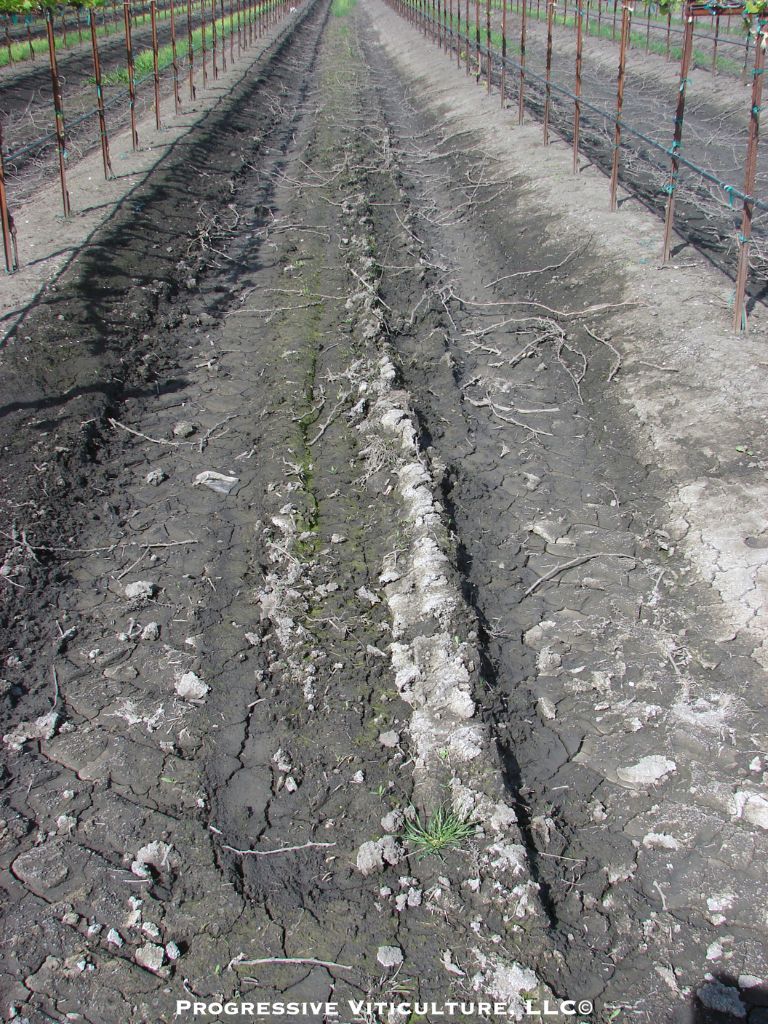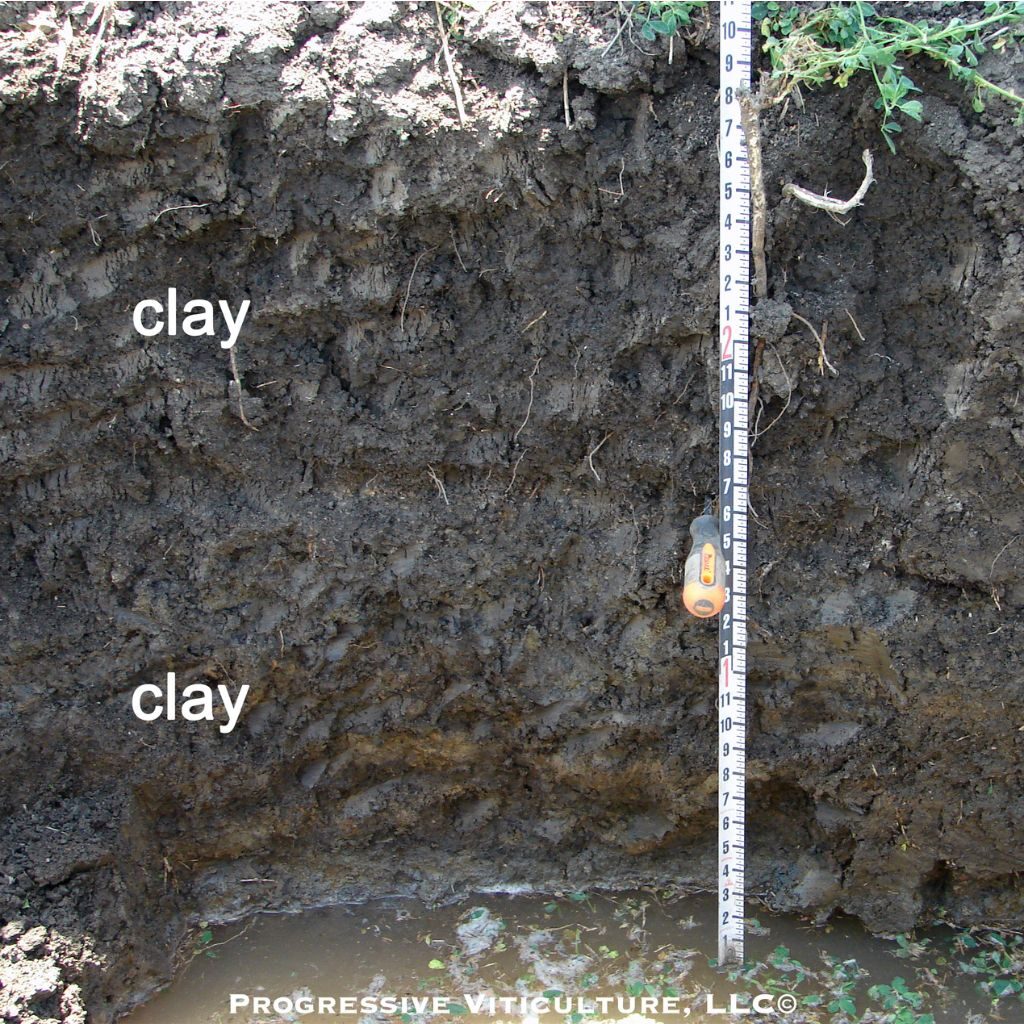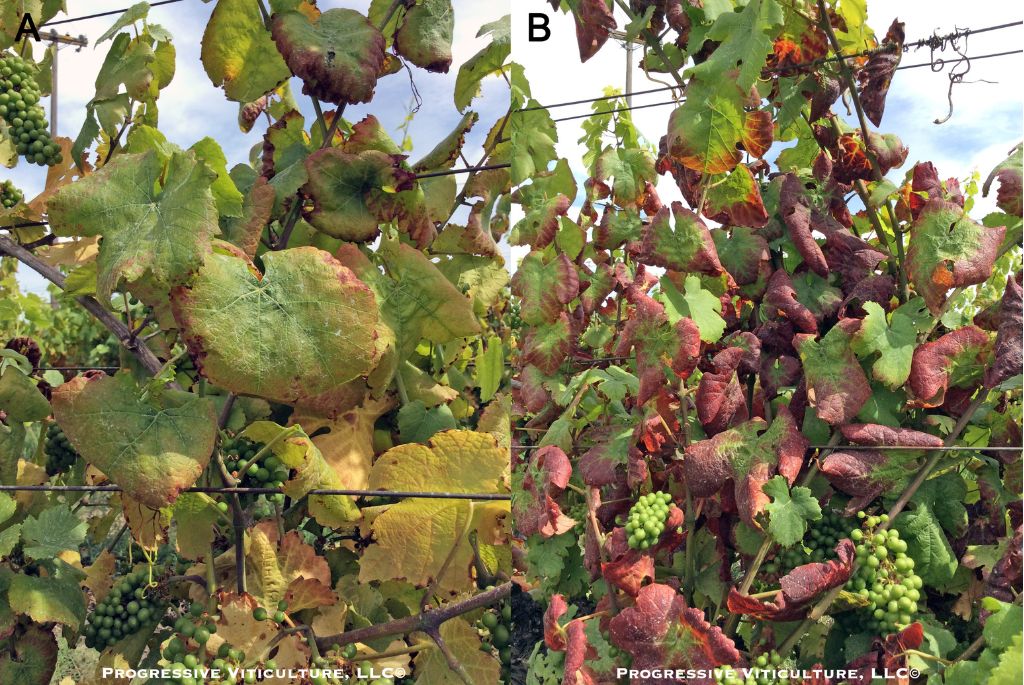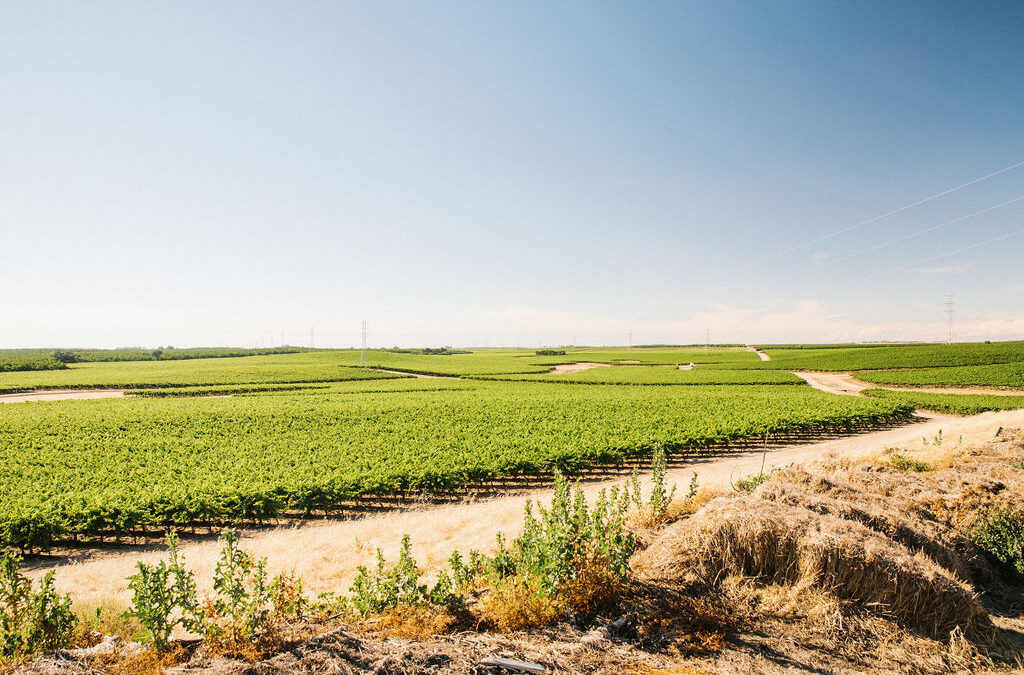MONDAY, APRIL 17, 2023. BY STAN GRANT, VITICULTURIST.
Since the 1980s, many researchers, vineyard advisors, and winegrowers have been keenly interested in deficit irrigation and the effects of limited soil water on grapevines. While there are substantial reasons for this, it is important to remember that the reverse situation, too much soil water, also deserves careful consideration. In fact, under some circumstances, soil saturation can cause plant damage or death faster than soil dryness.
Water displaces air in soil pores, and in saturated soils, all pores are filled with water. Very slow-moving or stagnant water within the pores of saturated soils severely restricts the movement of air and other gases and the exchange of gases between soil and the overlying atmosphere. The low water solubility of oxygen (O2) and its slow diffusion in stagnant water exacerbates matters. Very low oxygen, excess carbon dioxide, and limited gas exchange are the defining characteristics of waterlogged soils (Figure 1).

Figure 1. A vineyard on clay soil with waterlogging in tractor rows and a favorable root zone environment within berms in vine rows. (Photo source: Progressive Viticulture©)
All vineyards, even those on well-drained soils, experience periods of soil saturation and restricted aeration after prolonged heavy rain. Fortunately, for most California vineyards, waterlogging is of short duration (a few days or less), and it usually occurs during the winter while cool soils and dormancy greatly limit root activity, their need for air, and the risk of harm to vines. Still, most winegrape regions in California have some areas that experience extended periods of waterlogging while vines are active. In this article, we will examine waterlogging in vineyards and its management.
Occurrences of Waterlogging
Waterlogging develops when water tables rise into vineyard root zones. High water tables are common in low-lying areas with no outlet or in areas adjacent to bodies of water. At these locations, the depth and duration of saturation determine the viability of vineyards. In general, an economically viable vineyard requires three or more feet of well-aerated soil above a water table while vines are active (Figure 2).

Figure 2. A root zone with a high risk of waterlogging due to shallowness, clay texture, and a high water table. (Photo source: Progressive Viticulture©)
There are many areas with prolonged high water tables in and around the Sacramento-San Joaquin Delta. They also occur to a limited extent in most other California winegrowing areas, including the Coast Range and Sierra Nevada Foothills. In these areas, water tables are most evident during wet winters and springs. During these times, they may, in places, become visible as standing water on vineyard floors.
Artesian springs, which occur in places in the Sierra Foothills and the Coast Range, saturate root zones like high water tables. These springs develop where rock layers surrounding aquifers exert pressure on them, forcing water upwards. They are often apparent on the soil surface and can persist into the growing season.
Natural subsoil features that severely restrict downward water movement and root zone drainage cause waterlogging while creating so-called perched water tables. This is the case for shallow soils that overly fractured bedrock and for soils with slightly previous subsoil layers, such as hardpans and claypans. The waterlogging hazard is particularly high for vineyards underlain with basin-shaped hardpans.
Distinct boundaries (interfaces) between two soil layers of different textures also restrict downward water movement and create temporary perched water tables. In these instances, water will only enter the lower layer after the upper layer becomes completely saturated. Artificially compacted topsoils, with their limited pore volume, are also vulnerable to waterlogging.
Flood waters saturate soils as they inundate vineyards. Many vineyards on flood plains, basins, and other topographic lowlands near waterways are at risk of flooding. High water tables, restrictive subsoil layers, and surface soil compaction intensify the impacts of flooding on root zone aeration.
Again, grapevines tolerate flooding while dormant. After shoots have emerged, they may also survive so long as the water is moving. Moving water absorbs oxygen and releases carbon dioxide and other gases at its surface, and currents within it bring oxygen to the soil surface. Conversely, such gas exchange is negligible for still water and vines suffer accordingly.
Prolonged irrigation, regardless of the method of application, can artificially waterlog root zones. Such overirrigation is possible in many circumstances, even in some drip-irrigated vineyards on hillsides and on sandy soils. It is, however, most common for slowly permeable clay soils, compacted topsoils, and soils with subsurface features that restrict drainage.
Soil saturation, at a minimum, is an operational inconvenience because it encumbers vineyard activities, especially those involving machinery. Premature machine entry into a vineyard with saturated soil runs the risk of poor traction and stuck equipment. Such activities unavoidably compact soils, diminishing soil permeability and intensifying the ill effects of waterlogging.
Effects of Waterlogging on Grapevines
Below the surface, the effects of soil saturation and waterlogging are more complicated and taken together, more significant. Moisture buffers the effects of air temperatures on soil temperatures. For this reason, excessively wet soils are slow to warm early in the growing season, which delays the start of normal root activities as vines come out of dormancy. This includes the synthesis of hormones that promote budbreak, as well as the remobilization of nutrients stored in root tissues.
Respirating roots and microbes tend to decrease oxygen (O2) and increase carbon dioxide (CO2) in root zones, and waterlogging intensifies this tendency. Under waterlogging, limited oxygen, and abundant carbon dioxide greatly impact small roots and root tips, which have relatively high respiration rates compared to larger roots. The inhibited growth of small roots and the low initiation of new roots rapidly become apparent after the onset of waterlogging.
Concurrent with restricting root growth, waterlogging induces changes in root function. These changes have several overlapping effects that subsequently impact shoots. Correspondingly, shoot symptoms of waterlogging typically come a few days after the beginning of root injury. The effects of waterlogging on root function and shoots are as follows.
Poor aeration hinders water uptake and water movement within roots, leading to leaf drying and decreased photosynthesis. These effects are measurable within a couple of days of waterlogging and may be most glaring for vines on clayey soils, with their preponderance of small pores that tightly hold water. Typically, leaf wilting is the first observed symptom of waterlogging.
Restricted root growth and function under waterlogging inhibits mineral nutrient uptake and it does so before restricting shoot growth. Consequently, mineral nutrient concentrations in growing shoots can become dilute and deficient, contributing to leaf decline. Nitrogen, phosphorus, potassium, magnesium, and calcium are among the nutrients known to decrease in the shoots of plants on waterlogged soils. Low oxygen also lessens the selective root uptake of potassium over sodium, which leads to increased sodium in shoots.
Concurrent with effects on water and mineral nutrients, oxygen deficiency in root zones induces changes in root metabolism, making them somewhat anaerobic. Incompletely oxidized compounds, such as lactic acid, aldehydes, and ethanol, are the products of such metabolism. As they accumulate, these compounds contribute to root decline and heightened susceptibility to disease. Eventually, roots in waterlogged soils become severely injured and after a few days, they may die.

Figure 3. (A) Leaf cupping and yellowing symptoms of waterlogging injury in Pinot gris; (B) Reddening-accompanied leaf cupping in a waterlogged Merlot vineyard. (Photo source: Progressive Viticulture©)
In due course, shoot growth slows, and leaves prematurely age due to waterlogging (Figure 3).
This process involves ethylene, an aging hormone that normally diffuses out of roots and into root zones. In waterlogged soils, ethylene accumulates within roots and diffuses upwards to shoots, where it contributes to leaf yellowing and induces leaves to bend downwards (epinasty). Simultaneously, within roots, the production of hormones involved in normal shoot development (cytokinins and gibberellins) is greatly diminished. Leaf death due to prolonged waterlogging commonly begins near the bases of shoots. Waterlogging during bloom can disrupt flowering and fruit sets.
Warm soil temperatures and abundant readily-decomposable organic matter accentuate the effects of limited oxygen on grapevines, even in soils waterlogged for a short period. In California, after excess soil water drains and air re-enters root zones, most vines recover from waterlogging, but growth and fruit production remain curtailed for the remainder of the growing season and sometimes in the next.
Effects of Waterlogging on Soil Microorganisms
Excessively wet but not waterlogged soils are favorable environments for root rot fungi like Phytophthora. Waterlogged soils, on the other hand, with scant oxygen and elevated carbon dioxide, are extremely harmful to most microbes. Importantly, waterlogging can destroy the mycorrhizal fungi associated with grapevine roots, further decreasing their ability to take up water and mineral nutrients.
Waterlogging diminishes both the number and diversity of free-living microorganisms that normally reside in soils (aerobes), many of which are beneficial for vineyards. In their place, microbes adapted to limited aeration (anaerobes) proliferate. Some have indirect adverse effects on root zones as they acquire energy, which will be addressed after briefly discussing how soil microbes normally obtain energy.
A few soil microbes are capable of photosynthesis for generating energy. Most soil microbes, however, acquire energy through the transfer of electrons from a donor substance to a receptor substance during respiration. Organic matter is the predominant source of electron donors, and carbon is the principal electron donor in organic matter. Aerobic microbes use oxygen as an electron receptor during respiration. In fact, due to their large numbers and considerable activity, soil microbes normally consume oxygen more rapidly than grapevine roots.
In the absence of oxygen, anaerobic bacteria in waterlogged soils use less abundant and progressively weaker electron receptors, and their metabolism of organic matter is incomplete. Nitrate is the first alternative receptor used in waterlogged soils. The gain of electrons transforms nitrate into nitrite, nitrous oxide, and finally, nitrogen gas, which slowly escapes into the atmosphere. Detrimental side effects of this process, called nitrification, include decreased soil fertility and increased air pollution.
A version of this article was originally published in the Mid Valley Agricultural Services November 2010 newsletter and was updated for this blog post. Part 2 will be posted next week.
Further Reading
Agrios, GN. Plant pathology. Academic Press. San Diego, CA. pp. 17-18. 1988.
Australian Wine Research Institute. Fact Sheet Viticulture. Managing waterlogged vineyards. (www.awri.com.au/wp-content/uploads/2022/11/Managing-waterlogged-vineyards.pdf). Updated November 2022.
Dry, N. Grapevine rootstocks: selection and management for South Australia vineyards. Lythrum Press, Adelaide. 2007.
Ehmke, T. After the flood. Crops and Soils Magazine. January-February, 2017.
Grant, S. Maximizing cover crop benefits through selection and management. Lodi Winegrape Commission Coffee Shop. (www.lodigrowers.com). October 12, 2015.
Grant, S. Selecting a rootstock for a wine grape vineyard. Lodi Winegrape Commission Coffee Shop. (www.lodigrowers.com). October 07, 2016.
Grant, S. The ultimate goal of vineyard soil management: optimized root zone function. Grant, S. Lodi Winegrape Commission Coffee Shop. (www.lodigrowers.com). December 20, 2021.
Grant, S. There is more to vineyard floors. Lodi Winegrape Commission Coffee Shop. (www.lodigrowers.com). March 28, 2022.
Grant, S. Soil compaction: a stealthy thief. Lodi Winegrape Commission Coffee Shop. (www.lodigrowers.com). September 19, 2022.
Grant, S. Deep cultivation for preparing and maintaining vineyard root zones. Lodi Winegrape Commission Coffee Shop. (www.lodigrowers.com). October 17, 2022.
Grant, S. Till or no till? Lodi Winegrape Commission Coffee Shop. (www.lodigrowers.com). January 23, 2023.
Hansen, B, Grattan, SR, and Fulton, A. Agricultural salinity and drainage. University of California Irrigation Program, Davis. 1999.
Hillel, D. Introduction to soil physics. Academic Press, New York. 1982.
Kawai, Y, Benz, J, and Kliewer, WM. Effect of flooding on shoot and root growth of rooted cuttings of four grape rootstocks. Journal of the Japanese Society of Horticultural Science. 65, 455-461.1996.
Killham, K. Soil ecology. Cambridge University Press. Cambridge. pp. 17-18. 1994.
Kramer, PJ. Water relations of plants. Academic Press, San Diego, CA. pp. 173-178. 1983.
Kramer, PJ, and Kozlowski, TT. Physiology of woody plants. Academic Press, San Diego. 1979.
Lui, R, Yang, C, Zhang, G, Zhang, L, Yang, F, and Guo, W. Root recovery development and activity of cotton plants after waterlogging. American Journal of Agronomy. 107, 2038-2046. 2015.
Maschmedt, DJ. Chapter 3: Soils and Australian Viticulture. In Dry, PR, and Coombe, BG. (Eds.). Viticulture volume 1, Resources. Winetitles, Adelaide. 2004.
Marschner, H. Mineral nutrition of higher plants. 2nd Ed. Academic Press, London. 1995.
May, P. Using grapevine rootstocks: the Australian perspective. Winetitles, Adelaide. 1994.
Myburgh, PA, and Moolman, PA. The effect of ridging on the soil water status of a waterlogged vineyard soil. South African Journal of Plant and Soil. 8, 184-188. 1991.
Myburgh, PA, and Moolman, PA. Ridging – a soil preparation practice to improve the aeration of vineyard soils. South African Journal of Plant and Soil. 8, 189-193. 1991.
Myburgh, PA, and Moolman, PA. Effect of ridging on the temperature regime of a waterlogged vineyard soil. South African Journal of Plant and Soil. 10, 17-21. 1993.
Myburgh, PA. Effect of ridging on performance of young grapevines on a waterlogged soil. South African Journal of Enology and Viticulture. 15, 3-8. 1994.
Pearson, RC, and Goheen, AC. Compendium of grape diseases. APS Press, St. Paul. pp. 66. 1988.
Pongracz, DP. Rootstocks for grapevines. David Phillip Publisher, Cape Town. 1983.
Salisbury, FB, and Ross, CW. Plant physiology. Wadsworth Publishing Company, Belmont, CA. 1978.
Southey, JM. Grapevine rootstock performance under diverse conditions in South Africa. In Wolpert, JA; Walker, MA; Weber, E. (Eds.). Rootstock seminar: a worldwide perspective. American Society for Enology and Viticulture. 1992.
Stevens, RM, and Prior, LD. The effect of transient waterlogging on the growth, leaf gas exchange, and mineral composition of potted Sultana grapevines. American Journal of Enology and Viticulture. 45, 285-290. 1994.
Striegler, RK, Howell, GS, and Flore, JA. Influence of rootstock on the response of grapevines to flooding stress. American Journal of Enology and Viticulture. 44, 313-319. 1993.
Tisdale, SL, Nelson, WL, and Beaton, JD. Soil fertility and fertilizers. Macmillan Publishing Company, New York, 1985.
Van Schilfgaarde, J. Drainage for agriculture. American Society of Agronomy. 1974.
Wesseling, J. Crop growth and wet soils. In Van Schilfgaarde, J. (Ed.). Drainage for agriculture. American Society of Agronomy, Madison, WI. 1974.
West, DW, and Taylor, JA. Response of six grape cultivars to the combined effects of high salinity and waterlogging. Journal of the American Society for Horticultural Science. 109, 844-851. 1984.
Williams, LE, Dokoozlian, NK, and Wample, R. Grape. In Schaffer, B, Anderson, PC (Eds.). Handbook of environmental physiology of fruit crops. Volume I. Temperate Crops. CRC Press, Boca Katon, FL. 1994.
Wine Australia. Fact sheet: flooded vineyard case studies. 2012. www.wineaustralia.com/getmedia/4ddeda8b-d142-4b01-8ead-5ef41ca55ed4/2012-flooded-vineyard-case-studies.pdf
Have something interesting to say? Consider writing a guest blog article!
To subscribe to the Coffee Shop Blog, send an email to stephanie@lodiwine.com with the subject “blog subscribe.”
To join the Lodi Growers email list, send an email to stephanie@lodiwine.com with the subject “grower email subscribe.”
To receive Lodi Grower news and event promotions by mail, send your contact information to stephanie@lodiwine.com or call 209.367.4727.
For more information on the wines of Lodi, visit the Lodi Winegrape Commission’s consumer website, lodiwine.com.
For more information on the LODI RULES Sustainable Winegrowing Program, visit lodigrowers.com/standards or lodirules.org.


